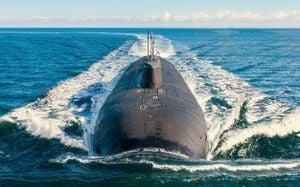Meta, the parent company of Facebook, has announced ambitious plans to construct what it calls the "mother of all" underwater fiber-optic cables, with project costs expected to rise to approximately $10 billion. This significant infrastructure investment aims to provide the company with the necessary bandwidth to accommodate the ever-increasing online traffic across its various platforms, including Facebook, Instagram, WhatsApp, and Threads.
According to sources close to the development, the proposed cable will stretch around 40,000 kilometers (roughly 24,854 miles) globally and will be utilized exclusively by Meta. The project, termed as the biggest of its kind, is set to take between five to ten years to complete, reflecting the scale and complexity involved.
Originally reported by subsea cable expert Sunil Tagare back in October 2024, this project appears to aim at enhancing Meta’s operational capabilities and mitigating the vulnerabilities exposed by recent global geopolitical crises. Notably, the rising tensions and incidents of sabotage affecting subsea cables have raised alarms; just last week, two cables were severely damaged near northern Europe under mysterious circumstances.
Meta’s cable project is anticipated to link key locations starting from the east coast of the United States, looping around to the west coast and extending to important connection points around the globe, including India, South Africa, and Australia. This strategic "W" formation route will circumvent regions identified as high-risk for geopolitical instability where several cables have recently suffered damage due to sabotage.
Subsea cables play a pivotal role, carrying about 99 percent of global internet traffic. The need for greater security and resilience has never been more apparent, as fears of targeted attacks and damage amplify due to conflicts like Russia's invasion of Ukraine. Investigations currently underway are exploring whether recent incidents were acts of sabotage. Authorities are particularly focused on the behavior of the Chinese freighter, allegedly captained by a Russian national, which was apprehended after violating areas near damaged cables.
Meta seems well-aware of these challenges. With billions of users relying on its services, the company’s platforms alone account for about 10 percent of fixed-line internet data and over 22 percent of mobile traffic. This undersea cable initiative follows suit with Google, which has similarly invested heavily in subsea cabling to secure and optimize its data routing.
The scope of Meta’s project not only enhances its services but also sets it apart from partnerships with companies owning existing cable networks. Previously, Meta was involved with 16 subsea cable networks, but with this independent undertaking, it will gain complete ownership and control over the cable, allowing it to prioritize its data traffic seamlessly.
Meta’s plans reportedly aim to finalize the cable’s specifications—including its speed and capacity—as details are expected to emerge early next year. This venture emphasizes Meta’s resolve to safeguard its global communications infrastructure against potential future disruptions.
Meanwhile, concerns linger over the fragility of existing subsea cable systems. The geopolitical climate continues to raise significant red flags for the reliability of these networks. Past incidents, which included damages to pipelines like Nord Stream, serve as potent reminders of the vulnerabilities these underwater infrastructures face.
Overall, with Meta’s latest initiative, the tech giant aims not only to bolster its service capabilities but also to preemptively address the vulnerabilities highlighted by recent global upheavals. Meta’s ambitious infrastructure project could redefine online connectivity and accessibility for users worldwide, ensuring they continue to have reliable access to the platforms they frequent.
The announcement has sparked discussions within the tech community about the future of internet connectivity via subsea cables—focusing on who controls the access and the intricacies involved in maintaining the balance between technological advancement and geopolitical stability. How these developments will shape the online experience remains to be seen.



